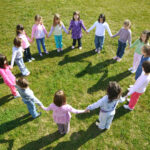Here is the first of 7 posts about research-backed ideas for supporting multilingual children’s home languages. The community language isn’t in danger. But once multilingual children start pre-school, their precious home languages are in danger of backsliding, plateauing, stagnating, or incomplete acquisition. We’ve got to do what we can to stop that happening! A solid foundation in home languages paves the way for easier and better acquisition of the school language. And home languages are crucial for cultural heritage and family relationships. Need I say more?!!
Zheng & colleagues in Australia identified eighteen studies with details of strategies that teachers used to support home languages in children under age five. Most of the studies were from the US where Spanish and English were the languages so the strategies won’t fit every situation. More research is needed and you need to think about which of the strategies fits with your particular situation. They organised the strategies around four themes and you can read all about the first one in this post. Then I’ll cover the other three in separate posts. Let’s get started!
# 1 Translanguaging Strategies
What’s that? It’s the practice of encouraging children to hear and use their home language alongside the majority language. What would it look like?
Here are 9 strategies that Zheng & colleagues found teachers using:
- ‘language-by-time-of-day’ i.e. English in the morning, Spanish in the afternoon.
- ‘one teacher/one language’ approach where teachers opted to speak in one language only.
- culturally and linguistically responsive (Spanish-English) bilingual approach where bilingual teachers used both of their languages.
- teachers speaking the children’s home languages which means learning at least some words and phrases in the children’s languages.
- using code-switching to manage classroom activities, provide curriculum instruction, & direct children’s behaviours. This practice shows children that bilingualism is useful for creating meaning, teachers modelling bilingualism as a resource.
- Teachers openly acknowledged the value of using different home languages in the classroom.
- Home languages were used in preschool classroom wall signs and were embedded in daily routines, activity materials, and songs.
- Teachers used “co-ordinated bilingual performances” during read-aloud activities in a Spanish-English bilingual preschool. In these activities, teachers used both of their languages to meet curriculum targets for children’s vocabulary and narrative skills.
- Translation was important to support teachers’ coordinated practices.
Which of these do you do already? Which ones could you incorporate into your pre-school?
If you like this post, please share it with your friends and colleagues!
Let’s get talking,
MP
What I read so you don’t have to:
Axelrod Y, Cole MW. ‘The pumpkins are coming…vienen las calabazas…that sounds funny’: Translanguaging practices of young emergent bilinguals. Journal of Early Childhood Literacy. 2018;18(1):129-153. doi:10.1177/1468798418754938
De Houwer, A. & Pascall, M. (2021). Our children and their languages: barriers, needs and opportunities: A proposal for early multilingual education KITA Handbook https://www.kindergartenpaedagogik.de/fachartikel/bildungsbereiche-erziehungsfelder/sprache-fremdsprachen-literacy-kommunikation/unsere-kinder-und-ihre-sprachen-huerden-beduerfnisse-und-chancen/
Gort, M., Pontier, R.W. & Sembiante , S. (2012) Function, Type, and Distribution of Teacher Questions in Dual-Language Preschool Read Alouds, Bilingual Research Journal, 35:3, 258-276, DOI: 10.1080/15235882.2012.734262
Gort, M. & Pontier, R.W. (2013). Exploring bilingual pedagogies in dual language preschool classrooms, Language and Education, 27:3, 223-245, DOI: 10.1080/09500782.2012.697468
Khalfaoui, A., García-Carrión, R., & Villardón-Gallego, L, (2021). A Systematic Review of the Literature on Aspects Affecting Positive Classroom Climate in Multicultural Early Childhood Education. Early Childhood Education Journal, 49: 71-81.
Langaloo, A., Lara, M., Deunk, M., Klitzing, N. & Strijbos, JW. (2019). A systematic review of teacher-child interactions with multilingual young children. Review of Educational Research 89(4): 536-568.
Zheng, Z., , Degotardi, S., & Djonov, E. (2021). Supporting multilingual development in early childhood: A scoping review. International Journal of Educational Research 110, 101894.

